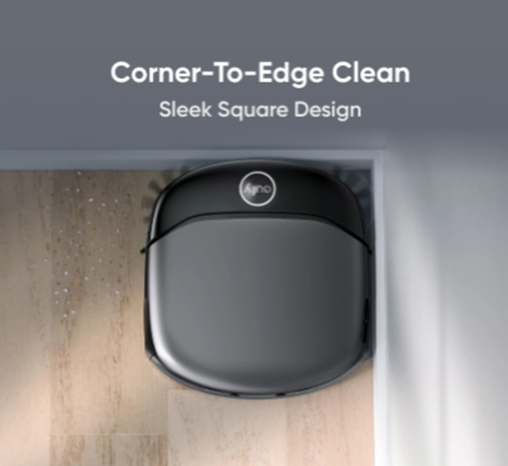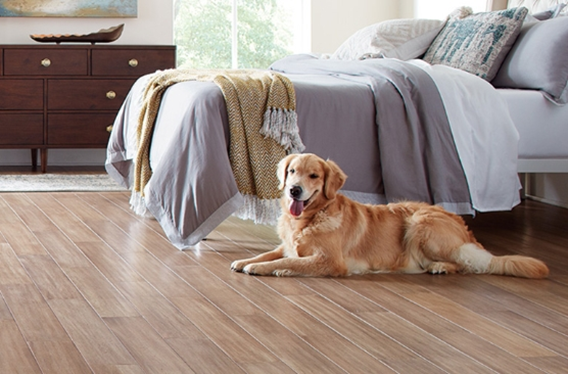Hardwood floors add timeless elegance to any home, but their beauty depends on consistent care. Dust, dirt, and spills may seem harmless at first, but over time, they can scratch the finish and wear down the wood. Proper daily cleaning prevents long-term damage while keeping your floors looking their best. Unlike carpets or tiles, hardwood requires specific techniques to avoid warping, discoloration, or surface scratches. In this article, we’ll explore the safest and most effective methods for daily hardwood floor maintenance, from tools to techniques.

What Are the Essential Tools for Daily Cleaning?
Microfiber Dust Mops vs. Traditional Brooms
A microfiber dust mop is far superior to a traditional broom for daily hardwood floor cleaning. While brooms can push dirt around or even scratch the surface, microfiber mops trap dust, pet hair, and fine debris with electrostatic attraction. The soft fibers glide smoothly without damaging the finish, making them ideal for quick daily sweeps. Additionally, microfiber mops are lightweight and often come with extendable handles, making it easy to reach under furniture. Unlike brooms, they don’t scatter dust into the air, which is especially beneficial for allergy sufferers. For best results, choose a mop with a washable pad to maintain hygiene and reduce waste.
The Right Vacuum Attachments for Hardwood
Not all vacuums are safe for hardwood floors—some can leave scratches or fail to pick up fine dust. If you prefer vacuuming, use a model with a hardwood setting or a soft brush attachment. Avoid beater bars, as they can dent or scuff the surface. Canister vacuums with suction-only modes work well, as do stick vacuums designed for hard floors. The key is to ensure the vacuum’s wheels or base won’t scratch the wood. For corners and edges, a crevice tool helps remove trapped dirt without spreading it around. Always check the manufacturer’s recommendations before using a vacuum on your floors.
Why Spray Mops Beat Bucket Cleaning
Traditional bucket-and-mop methods often lead to excess water, which can seep into hardwood and cause warping. Spray mops, on the other hand, allow precise control over moisture. They use a fine mist to dampen microfiber pads, ensuring the floor never gets overly wet. Most spray mops come with refillable bottles, so you can use your preferred cleaning solution instead of harsh chemicals. The lightweight design makes them easy to maneuver, and the pads are typically machine-washable for repeated use. For daily cleaning, a quick pass with a spray mop keeps floors looking fresh without risking water damage.

What Cleaning Solutions Are Safe for Hardwood?
The wrong cleaner can strip the finish or leave a dull film on hardwood floors. Avoid vinegar-based solutions, as their acidity can degrade the sealant over time. Instead, opt for pH-neutral cleaners specifically formulated for hardwood. A few drops of mild dish soap mixed with warm water works well for occasional deeper cleaning, but always wring out the mop thoroughly. For disinfecting, look for alcohol-free products that won’t dry out the wood. Never use wax-based polishes or oil soaps unless recommended by your flooring manufacturer, as they can create buildup and make refinishing difficult.
What’s the Perfect Daily Cleaning Routine?
Dry Cleaning First: Removing Abrasive Grit
Before mopping, always start with dry cleaning to remove loose dirt and grit. These tiny particles act like sandpaper underfoot, gradually scratching the floor’s finish. A quick pass with a microfiber mop or vacuum eliminates this risk. Pay special attention to entryways, where dirt is most likely to accumulate. If you have pets, daily dry cleaning also helps control fur and dander. This step takes just a few minutes but significantly extends the life of your floors.
Damp Mopping Techniques (The “Less is More” Rule)
When damp mopping, less water is always better. Excess moisture can warp wood or cause discoloration. Instead of soaking the mop, lightly mist the floor or use a well-wrung mop head. Work in small sections, moving with the grain of the wood to prevent streaking. For stubborn spots, apply a small amount of cleaner directly to the mop rather than the floor. After mopping, allow the surface to air-dry completely before walking on it. If possible, use a fan or open windows to speed up drying in humid climates.
High-Traffic Area Focus
Areas like hallways, kitchens, and living rooms need extra attention due to constant foot traffic. These spots accumulate dirt faster and may require a second pass with the mop. Placing rugs or mats in high-traffic zones can reduce wear, but be sure to use non-slip pads underneath to prevent moisture buildup. If you notice scuff marks, a slightly damp microfiber cloth can often remove them without harsh scrubbing.
How Can You Prevent Damage While Cleaning?
Avoid steam mops, as the high heat can damage the wood’s finish and cause warping. Never use abrasive scrubbers or harsh chemicals like bleach, which can strip the protective coating. Wipe up spills immediately to prevent staining or water absorption. For furniture, felt pads under legs prevent scratches when chairs or tables are moved. If you have pets, keep their nails trimmed to minimize floor scratches.
How Should Cleaning Adjust Seasonally?
Humidity changes throughout the year affect hardwood floors. In summer, higher moisture levels can cause wood to expand, so reduce damp mopping frequency. Winter’s dry air may lead to gaps between planks—use a humidifier to maintain optimal indoor humidity (30–50%). During rainy seasons, place absorbent mats at entryways to trap water before it reaches the floors.
Conclusion
A simple daily routine keeps hardwood floors looking pristine for years. Start with dry cleaning, use minimal moisture when mopping, and focus on high-traffic areas. For hardwood floor cleaning, avoid excess water and harsh chemicals. If you want to maintain your floors effortlessly, consider investing in high-quality cleaning tools like those from eufy, which offer efficient and gentle solutions. With consistent care, your hardwood floors will remain a stunning feature of your home.